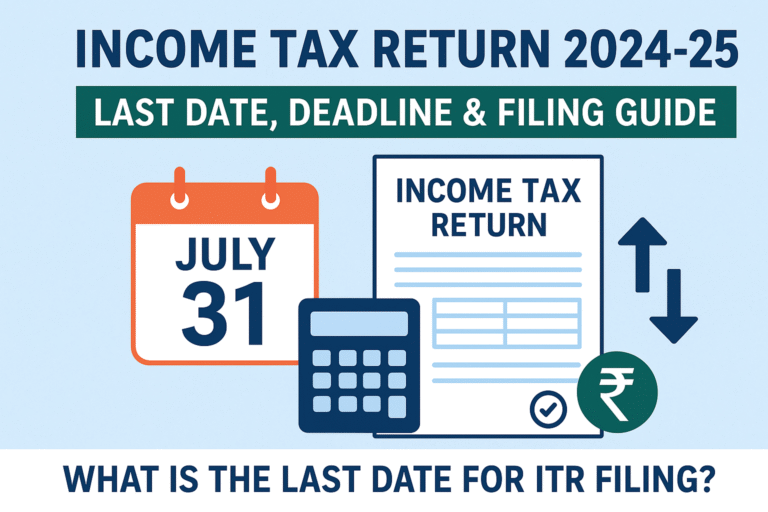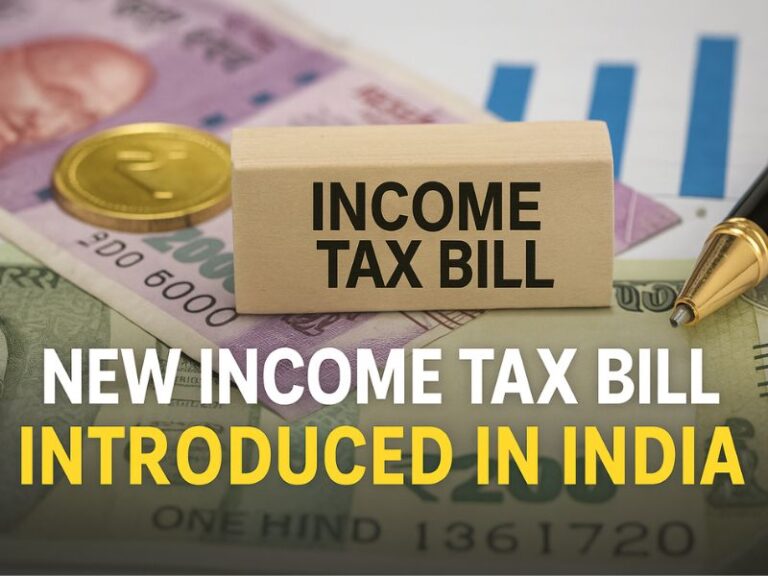Executive summary (one-minute read)
-
What’s officially extended: CBDT extended the non-audit ITR due date from 31 July 2025 to 15 September 2025 for AY 2025–26 through Circular No. 06/2025 dated 27 May 2025 and a corresponding PIB release.
-
What’s not (yet) extended: As of today, no official extension has been announced for Tax Audit Reports (Form 3CA/3CB-3CD), audit-case ITRs, or TP cases. Prevailing statutory timelines are 30 September 2025 (Tax Audit Report), 31 October 2025 (audit-case ITR), and 30 November 2025 (TP cases).
-
What’s being requested: Trade bodies (notably GCCI) have lodged formal representations to extend tax audit and audit-ITR due dates, citing AIS/26AS mismatches, portal glitches, and late utilities. No CBDT order has approved these requests so far.
The latest news you should know (updated 16 August 2025)
To reduce pressure on non-audit taxpayers, CBDT moved the standard 31 July deadline to 15 September 2025 via Circular No. 06/2025 and a PIB press release. The circular explicitly invokes powers under Section 119 of the Income-tax Act to extend the time for returns otherwise due on 31 July.
However, audit-linked due dates remain unchanged as of now. Multiple media explainers and practitioner summaries continue to list the operative dates as 30 Sept (Tax Audit Report), 31 Oct (audit-case ITR), and 30 Nov (TP) for AY 2025–26.
Parallelly, industry bodies have amplified calls for further relaxations. The Gujarat Chamber of Commerce & Industry (GCCI) publicly requested more time for both ITR filing and tax audit compliance, citing late utility releases, AIS/TIS/26AS mismatches, and intermittent portal issues. Multiple outlets covered these representations this week (13–16 Aug).
Bottom line: treat the 15 Sept extension as official (non-audit cases), and plan around 30 Sept / 31 Oct / 30 Nov for audit/TP unless and until CBDT issues another circular.
Why there is an “ITR tax audit extension request” this year
The wave of extension pleas rests on a familiar trio of constraints:
-
Data quality and timing problems in AIS/TIS/26AS. When TDS/TCS credits, interest incomes, or third-party reports appear late or with errors, reconciliation work expands and pushes audit timelines.
-
E-filing portal pressure near deadlines. Peak-hour slowdowns, session timeouts, and validation hiccups delay TAR and ITR uploads.
-
Late or iterative utility releases. Even modest schema tweaks or new validations can ripple through workpapers, TAR mapping, and ITR schedules, compressing the effective filing window.
Because of these, GCCI and others argue for synchronised extensions—not just for non-audit ITRs, but also for Tax Audit Reports and audit-case returns—to avoid last-minute surges and reconciliation errors. As of today, CBDT has not issued such an order.
The law and the dates (AY 2025–26)
Here’s the practical calendar you should currently work with:
-
Non-audit ITR (Individuals/HUFs etc., not liable to audit): 15 September 2025 (officially extended from 31 July).
-
Tax Audit Report (Form 3CA/3CB with 3CD): 30 September 2025.
-
Audit-case ITR (Section 139(1) for 44AB cases): 31 October 2025.
-
Transfer Pricing cases (Form 3CEB/Section 92E): 30 November 2025.
The Income Tax Department’s “Latest News” and utilities updates page is a good operational source to monitor for any change in the coming weeks.
Who actually needs a tax audit (quick refresher)
Under Section 44AB, a tax audit is generally mandatory for:
-
Businesses that cross the prescribed turnover threshold or opt out of presumptive taxation;
-
Professionals above the gross receipts threshold; and
-
Certain presumptive taxpayers who opt out in specified years.
The audit report is e-filed using Form 3CA/3CB with Form 3CD and must be available before filing the audit-case ITR so that schedules (e.g., BP, CFL, DEPR, IF) flow correctly. While the due-date mechanics come from statute/rules and annual practice, the currently discussed extension is only a request, not a directive. (Plan for 30 Sept / 31 Oct / 30 Nov.)
What taxpayers and CAs should do now (even if an extension arrives later)
1) Reconcile early: AIS/TIS/26AS vs. books
-
Pull latest AIS/TIS/26AS; tie out TDS/TCS, interest, dividends, and high-value transactions.
-
Chase deductors for corrections where entries or amounts don’t match. This is the #1 driver behind extension requests this year.
2) Lock your trial balance and close the books
-
Freeze a mid-September internal cut-off for non-audit cases and bring forward audit sampling for clauses with heavy documentation (e.g., 3CD clause 21, 34, 18, 44).
3) Validate 3CD clauses that commonly break
-
Clause 34: TDS/TCS details—map exceptions and disallowances under 40(a).
-
Clause 21: Disallowances (e.g., cash payments under 40A(3)/43B timing).
-
Clause 18: Depreciation—method changes, block movements, componentization.
-
Clause 44: Break-up of expenditure (entity-wise/registration-wise); keep GST breakout trail.
4) Dry-run uploads off-peak
-
Do a test JSON build of the Tax Audit Report and a staging ITR during off-peak hours; maintain multiple DSC/OTP routes to avoid single-point failures. (Portal slowdowns are a cited pain point.)
5) Map TAR → ITR schedules cleanly
-
Reconcile P&L and Balance Sheet to Schedules BP/OS, ensure CFL continuity, and keep IF/PTI aligned for partner-share pass-throughs.
-
For companies, double-check ITR-6 schema revisions noted in utility updates.
6) Don’t bank on “late night” extensions
-
Some years see last-minute relaxations, but your baseline plan should assume no further extension until CBDT says so via press release or circular.
The case for (and against) another extension—balanced view
Arguments for extension (industry side):
-
Data discrepancies and utilities timing have shortened the effective compliance window, increasing risk of errors;
-
Portal stability during peak weeks remains a practical concern;
-
Festival season / audit overlap (statutory audits, ROC, GST) stretches teams thin.
Arguments against (administration perspective):
-
A 15 Sept non-audit extension already provides breathing space;
-
Earlier utility releases (relative to prior years) in some forms and continuous portal improvements;
-
Policy consistency—frequent relaxations can entrench last-minute culture and hamper revenue flows.
Practical takeaway: Prepare as if 30 Sept / 31 Oct / 30 Nov are hard stops. If a new Section 119 order appears, re-sequence quickly—but don’t pause execution.
Penalties, interest, and fee—what’s at stake
-
Section 234F (late filing fee): up to ₹5,000 (₹1,000 if total income < ₹5 lakh) for delayed ITRs.
-
Interest 234A/B/C: applies where self-assessment/advance tax shortfalls exist.
-
Section 271B (tax audit default): 0.5% of turnover/receipts up to ₹1.5 lakh, subject to reasonable cause. Practitioner explainers for AY 2025–26 reiterate these risk points alongside the current due dates.
Frequently asked questions
Q1: Has CBDT extended the tax audit due date (Form 3CD) for AY 2025–26?
No official extension has been notified as of 16 Aug 2025. The working date remains 30 September 2025.
Q2: What is the ITR due date for audit cases?
31 October 2025 (audit-case ITR), with 30 November 2025 for TP cases.
Q3: What exactly did CBDT extend?
CBDT extended the non-audit ITR due date to 15 September 2025 via Circular No. 06/2025 and a PIB note.
Q4: Are trade bodies seeking more time?
Yes. GCCI and others requested extensions for both ITR and tax audit due to AIS/26AS issues, portal glitches, and utility timing. No approval yet.
Q5: Where can I check for any late-breaking change?
Monitor PIB and the Income Tax Department’s Latest News/Utilities page. Any change will be via a CBDT circular/press release under Section 119.
Action checklist (for taxpayers, CFOs, and CAs)
-
Reconcile AIS/TIS/26AS early; escalate mismatch rectifications to deductors.
-
Close books and freeze TB; front-load heavy 3CD clauses (21, 34, 18, 44).
-
Test-file TAR and ITR during off-peak hours; maintain backup DSC/OTP.
-
Map TAR figures to ITR schedules (BP, CFL, IF/PTI); re-check ITR-6 schema notes.
-
Budget cashflows for potential 234A/B/C interest and 234F fee if you anticipate delays.
-
Watch PIB/CBDT for any fresh order; until then, plan for current dates.
Conclusion: Plan for the statutory dates; adapt swiftly if CBDT moves them
Given the official 15 September extension for non-audit ITRs and the absence of any order shifting the 30 Sept / 31 Oct / 30 Nov audit timelines, your safest path is to work the plan you have. Treat industry requests as signals, not rules, and keep an eye on CBDT’s official channels. If a late extension is issued, you can widen buffers and refine reconciliations—but the best defense against crunch-time chaos remains early reconciliation, validated 3CDs, and a clean TAR→ITR mapping.






